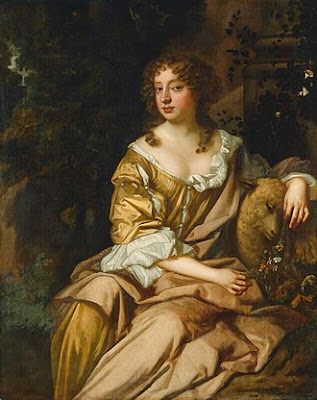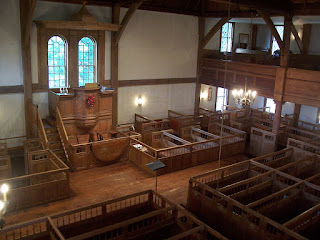It is old but it is beautiful, and its colours they are fine,
It was worn at Derry, Aughrim, Enniskillen and the Boyne,
My father wore it as a youth in bygone days of yore,
And on the 12th I love
to wear the sash my father wore.
The words of Northern Ireland's Loyalist anthem refer
to places in a 1689-1691 conflict whose fault lines are still with us. Of
course both sides of the Unionist-Nationalist divide have their own myths. But
that’s no reason for the rest of us - including the rising numbers in Ireland, North
and South, who disdain such tribalism - to accept them. Or is it, given the UK government's new cultural emphasis on fantasy history? In any case what’s the
truth?
The background really goes back to France and the 1685
Edict of Fontainebleau, Louis XIV’s revocation of the 1598 Edict of Nantes. Earlier,
French Protestants (often called Huguenots) had been granted toleration, civil
rights and liberty of conscience. Nantes promoted unity, ending the religious
conflicts which had plagued France in the 16th century. But Louis
revoked it, persecuting Huguenots, destroying their churches and closing their
schools.
French mistreatment of Protestants
The result was seismic. And the move backfired badly. Up to 900,000 Huguenot refugees left France, settling in other European countries and beyond. Mainly educated, skilled, hard-working and enterprising people, they aided their domicile nations by starting new industries and improving the techniques in existing ones. And many signed up to fight against France in the conflicts that followed.
Louis XIV 1685, on revoking the Treaty of Nantes
By the 1680s Louis XIV was the most powerful monarch in Europe, with France the continent’s richest, most populous state. Louis ruled as a dictator. His forces had won several victories and he’d bullied his way to extending French frontiers. He crossed the Rhine in September 1688 to force the Holy Roman Empire to accept his territorial and dynastic claims. The German princes resisted, fearing a permanently over-mighty authoritarian neighbour. When the Dutch States-General and William (of Orange) brought Holland and England into the war in coalition, Louis at last faced serious opposition.The Nine Years' War
The result? The Nine Years’ War, or War of the
Grand Alliance, or War of the League of Augsburg. On one side France, supported
by England’s deposed James II and his ‘Jacobite’ backers. Against them the
Dutch Republic, England, Scotland, the Holy Roman Empire, the Spanish Empire,
Savoy, Portugal, and at first, Sweden. This coalition saw France as a threat to
a stable European balance of power.
The Nine Years’ War was definitely not a religious war. The Grand Alliance
put together and led by William included both Protestant and Catholic states. Uniformity
of religion was never a goal of the players. But with competing colonial and
trade interests at stake, the conflict spread from Europe to North America,
Asia and the Caribbean.
So what of Ireland? William had become English king in
December 1688. He’d invaded in strength with his Dutch army but with English
and Scottish political support. As nephew and son in law of King James II he’d
expected to be the effective English sovereign at some stage. But when Catholic
James’ wife, against the odds, produced an heir, it completely changed the political dynamics. William’s Stuart wife Mary was no longer next in line. A short term
problem had turned into the prospect of a new authoritarian Catholic dynasty.
The Grand Alliance and Ireland
In December 1688 James left London for France in a hurry. He then landed in
Ireland three months later, in March 1689, with French money, troops and
military officers. Louis backed him, wishing to divert William’s forces away
from the key Dutch theatre. James and his local chief Tyrconnell besieged
northern Protestant strongholds. Derry (later called Londonderry by Unionists) was defended dourly.
It lost half its 8000 population, mainly to disease, but held out over 105 days
until relieved by the Royal Navy. The siege and its fabled heroic acts are
commemorated every year.
In 1690 William and his military chief Gen. Schomberg mustered
forces in Ireland. They counted 36,000 troops from several countries - Denmark
(7000), Holland (6000), French Huguenots (3000), plus English, Scots and a few Ulster
Protestants. James’ 23,500 army was of mostly untrained, pressed Irish peasants
and some Scottish and English Jacobites. But he also fielded several regiments
of French troops. Battle was joined on 1st July on the River Boyne
near Drogheda, some 30 miles north of Dublin.
The Battle of the Boyne was actually a relatively small affair,
with around 1500-2000 dead and a win for William. The Irish Jacobites suffered
disproportionately but it seems they withdrew in reasonable order after the defeat. James left for
Dublin and then sailed for France, never to return. It was emphatically not a fight between England and Ireland,
as popularly believed, nor between Catholics and Protestants. If you’re
fighting for the Catholics and Pope Innocent XI and the Papal States are
against you, you may be justified in thinking you've got problems.
The battle of Aughrim, a year later on 12th July 1691, was a bigger, costlier and more brutal affair. William had departed the theatre but an Irish Jacobite and French force of about 20,000, led by the French Gen. St Ruhe, fought Gen. van Ginkel’s Alliance army of a similar size. This included Dutch, Danish, English and French Huguenot units. St Ruhe was killed and his force decimated - perhaps 7,000 dead or captured.
James II, artist unknown
This was effectively the end of James’ Irish Jacobite ambitions. There was a further siege at Limerick, which surrendered in December 1691. 12,000-14,000 soldiers, plus some of their wives and families, left the town for France after raising the white flag, and were allowed to depart with their arms and equipment. Some, like the strange folk hero Patrick Sarsfield (of English descent), later, perhaps a touch unsportingly, joined French troops on the continent against the Alliance.
Commemoration and legacy
Interestingly, the original 12th July
commemoration was of Aughrim. The first commemorative parade for the Boyne
wasn’t held until 1791, 100 years after the event, when it displaced the more
decisive battle. But the 12th July date was retained. There were lots
of non-Irish and non-English participants in the conflict. And often Irish and
French soldiers on both sides.
The Nine Years’ War continued elsewhere until the 1697
Treaty of Rijswijk. Among its provisions France accepted William III as King of
England. James really had no interest in Ireland. He just used it to try to regain the
English throne, much as the Jacobites did with Scotland. Partly as a result he is not well regarded by history, either in Britain or Ireland.

























